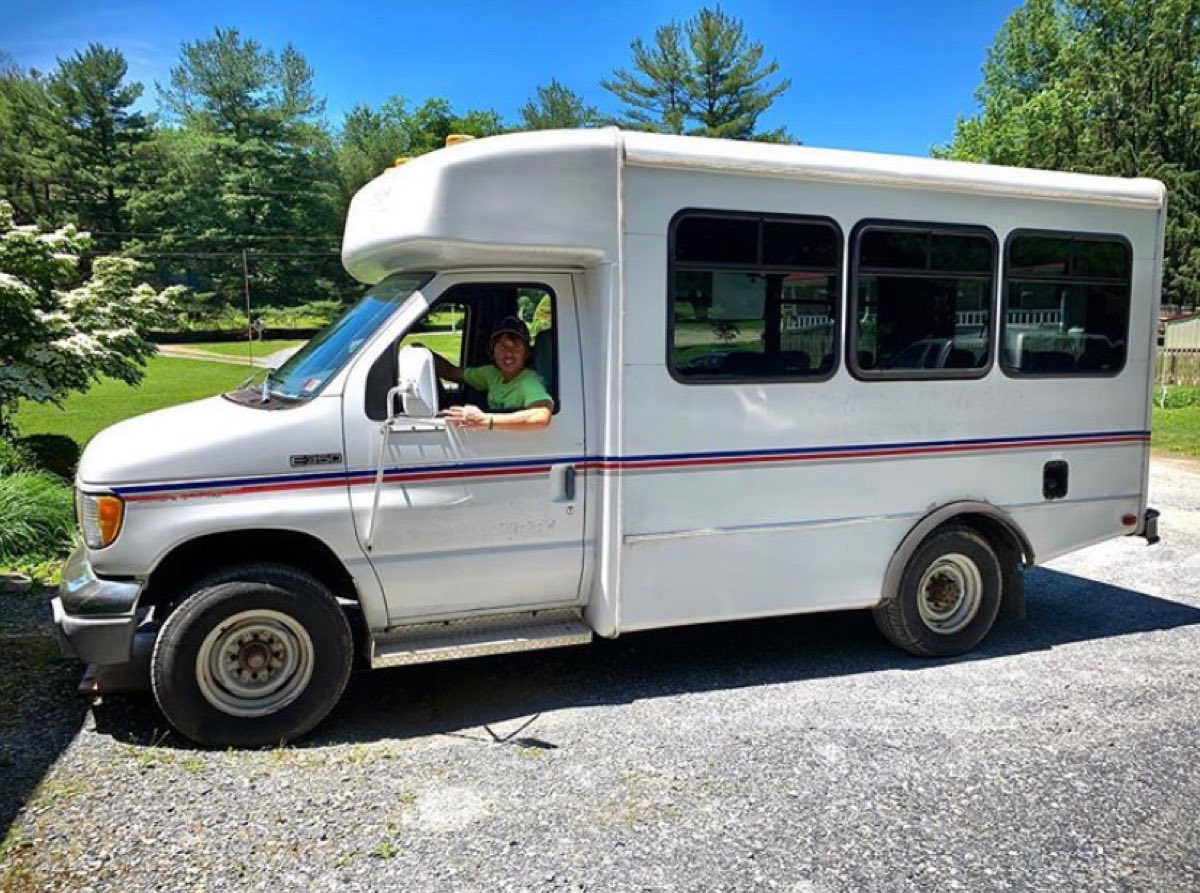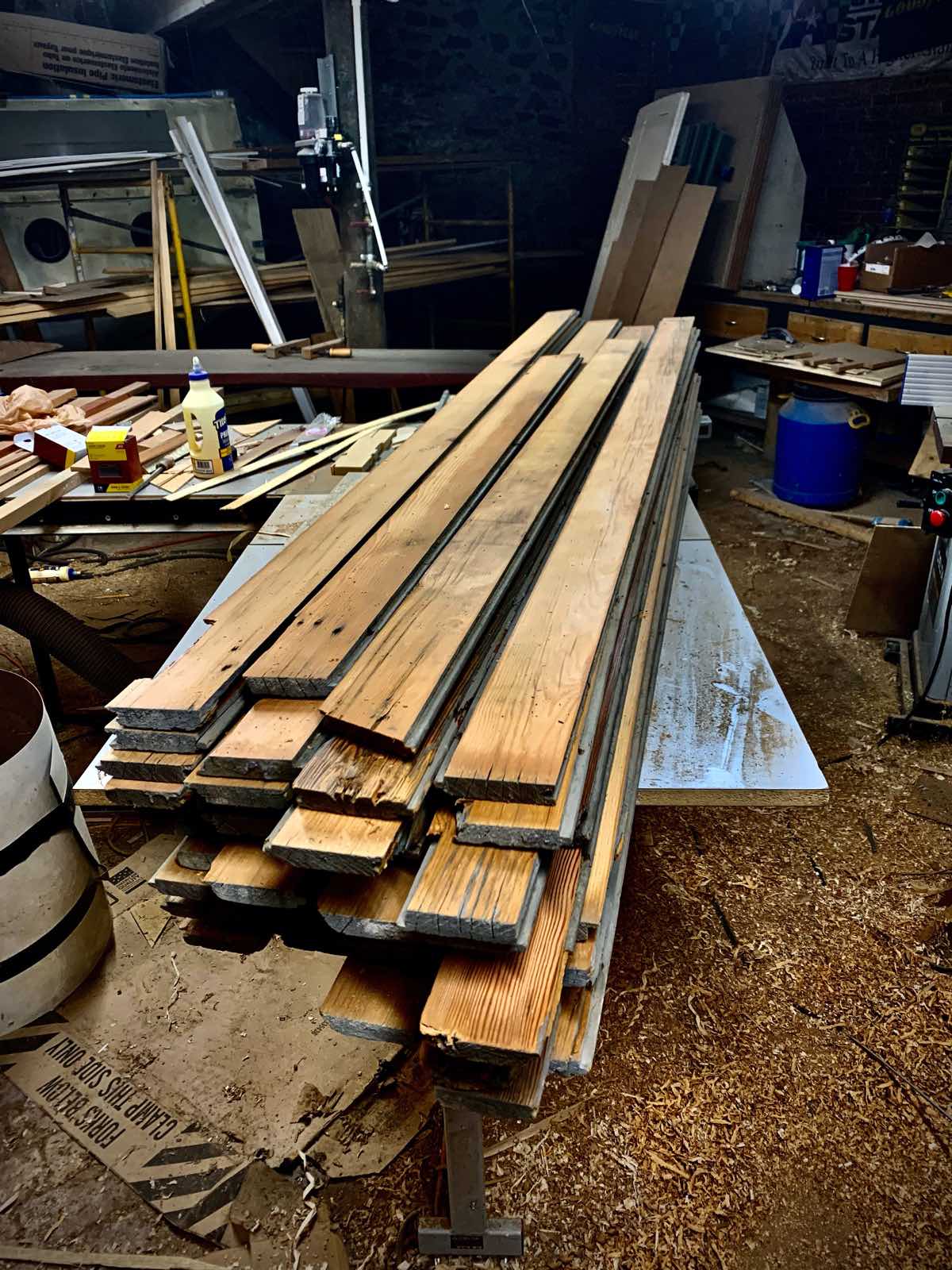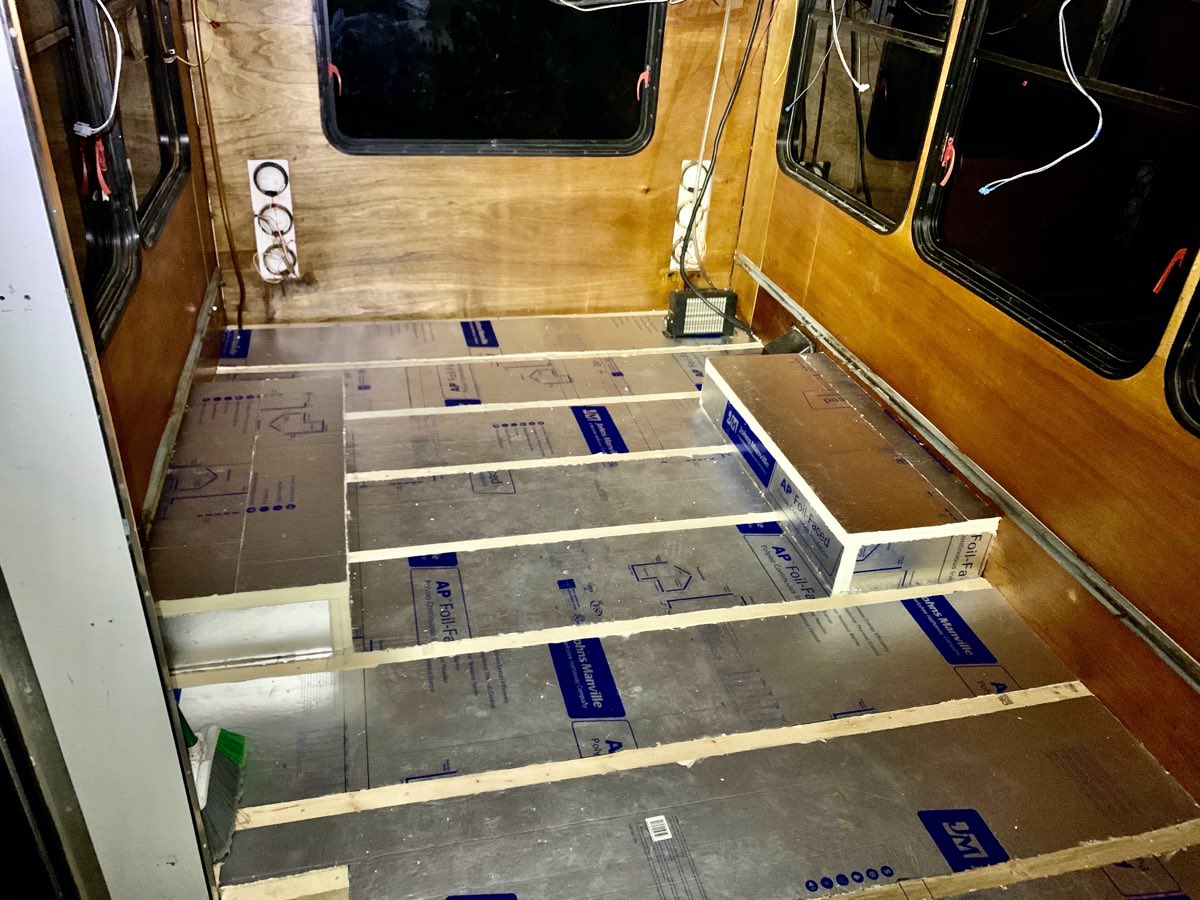This summer, I bought a 1998 Ford E-350 Club Wagon. In other words, I bought an old bus, and it may or may not smell like it. It’s old and boxy, has a shotgun seat, and just enough but not too much room. There are hand-crank windows and a radio that sometimes works. The paint job is fair, but nothing flashy. Under the hood is a 5.4-liter engine that runs strong. And to top it all off, the whole thing has less than 29,000 miles on it, supposedly.
Since purchasing it, I’ve spent a lot of hours fixing it up. My intent is to turn it into a mobile training base that I can live out of while I explore and train for races. It’s a simple idea, but as with many things, the distance between idea and reality is vast. When I got the bus, there were a few mechanical issues that I needed to tackle first: a leaky radiator, a malfunctioning heater/air conditioner, ancient belts and hoses, and a few other items that reared up along the way.
Tending to these things allows the bus to function both safely and comfortably. A leaky radiator isn’t so hot for keeping an engine from overheating. And though I rarely use air conditioning when I drive–I’m a windows-down and music-waaay-up kind of guy–heat is pretty nice in winter and a defroster does wonders for a foggy windshield. Serpentine belts work best when they aren’t frayed or cracked and the same goes for all of those hoses moving things about beneath the hood.
As important as this work was, all of that space behind the cab felt oh-so-tempting. I’d be in the front of the bus pulling bolts and such, all the while wanting to be in the back ripping out seats, fixing up walls, and laying a floor. In time, I got to those things too, only to think of the next thing on the list. At the moment, I’ve been insulating the floor but distracted by thoughts of building the bed.
It’s not necessarily a bad thing, this thinking ahead. Still, I wonder, why can’t I just be content with the space I’m in? I was thinking about this the other day as I worked on the flooring. I had pulled old floorboards out of my sister and brother-in-law’s barn and they needed some serious work before I could put them in the bus. The objective of the day was to do that by running them through the planer in my Dad’s wood shop. But before using the planer I needed to remove all of the old nails so they wouldn’t ruin the planer’s blades.
Taking care of these nails was an easy but tedious task. As I did the mind-numbing work of removing each one from its hiding place, I longed for it to be over. Work like this wears on me. I like tasks that feel fast, efficient, and offer instant gratification like mowing grass, shoveling snow, or running dirty boards through a planer.
As I endured the nails, my mind drifted to how training is much the same way. It’s not about one magic workout or exercise. It’s a process and each phase has its place. Much like the bus, it is easy to be in one stage while wishing you were in the next. We want to run hard and prove our fitness when what we really need is rest. Then, in the midst of a hard training block, we want nothing more than to have an easy day. We put races on the calendar, then jump into speedwork too soon because we feel pressure to be race ready. But this is no way to train, or build a bus.
It’s like the order of operations in math class. Please excuse my detailed athletics strategy, but as runners, it is important to remember that order matters. We can’t do the multiplication and division before we learn addition and subtraction, nor should we build an interior but neglect the engine. The finished product will reach its true potential when we follow the proper sequence.
All of this said, this article is not intended to tell you what the order should be. That will vary from one person to the next and is probably best determined via trial and error and possibly with the help of a coach. What I’m trying to say here is that order matters, but sticking to it can feel challenging.
Something that I think can help with this is finding a way to appreciate each stage. When you are building the engine, take the time to do it well. Check all of the belts and hoses. Fix the leaks and don’t rush. The runs may seem slow and boring, but that’s alright. Enjoy the opportunity to relax and let things take their course. Then, when it’s time to add strength, enjoy the ride. Tempos, steep climbs, and other things that accompany this phase don’t always feel very fun. Sometimes they do, but they can also feel a bit like pulling nails from old floorboards: a monotonous grind. Don’t give in, for if you are diligent in this phase, the speedy and gratifying work of the planer lies just ahead. When that phase comes, go with gusto. Not too much, though, the bottom of the well is for race day. The legs and lungs may burn a bit, but the body should feel like a machine: fit, strong, well prepared by the stages that came before.
Finally, when the time comes to rest and race, soak it up. Taper is like the final cleaning of the bus before its maiden voyage. It’s a time to dust off of all the hard work that has been put in, then flop down on the bed and take a nap. And finally, race day is the day of battle, but also a day of celebration. It’s the launching of a well-built machine. Jump in the driver’s seat, throw the pedal to the floor, and hammer down the road or trail with everything you’ve got. Move forward with the confidence that your rig is well bit and capable of the journey ahead.
And so, this is my recipe for success, not just in running, but also in life. Sure, the finer details can feel tricky, but the important thing to remember is to embrace the moment that you are in. Stick to the process and see it through.
Call for Comments
- Like Zach Miller, do you ever feel impatient with the process or certain elements of it?
- What pieces of the process do you enjoy the most, and which ones do you struggle to stay focused in?



